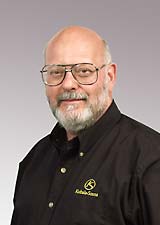美國KS線材
Joe Kubala has also been involved with audio equipment since college. After graduating with an engineering degree, Joe became more involved with the technical aspects of audio through an electronics course; along with designing and bread-boarding a few DC power supplies and amplifier circuits.
As audiophiles, both men have been involved with designing their own listening rooms; including specifying construction materials and techniques; selecting every component; and completely wiring the rooms for stereo and surround systems themselves. Both rooms are considered to be fine examples of high-end systems by those who have experienced them.
Howard’s involvement in audio deepened when he started consulting. His responsibilities ranged from setting up demo rooms for audio shows, to being part of the design team for new product development. During this time Howard became very aware of the influence of different cabling on the performance of the various systems he was putting together.At about the same time, Howard began planning and building a new home. As he considered his alternatives for how to cable both the two-channel and surround portions of his system, Howard successfully designed and constructed cables that out-performed the best wires that he could purchase at the time by “thinking outside the box”.
On several occasions over the next few years, Howard became aware of new performance levels being established in the cable industry. Once again, he found a way to equal or better those performance levels with his designs. At this point, the projects were personal in nature, but a fire was being lit inside Howard at the possibility of bringing the designs to market.
That fire was fueled further when the ideas that would turn out to be the foundation for OptimiZ? Architecture came to Howard when he was designing new power cords for his amplifiers. Once again, his “outside the box” designs out-performed the best commercially available cables, but this time by a wider margin.
It was about this time that Joe and Howard, who had become friends, started to assist each other with improvements to their respective systems, becoming intimately familiar with both in the process. These changes included equipment, room treatments, speaker placement, and all the things that go into optimizing a system.
Howard began to share his experiences with cables, and his thoughts about the possibility of bringing them to other audiophiles. At this point, both men decided to “go for it” and put all their available energy into continuing to develop the concepts which would serve as the foundation for the OptimiZ? Architecture.
Joe and Howard began a long process of building cable after cable, using different materials, wire gauges and number of conductors in different combinations and geometries. Each interconnect, speaker cable or power cord was carefully listened to in both systems – one all solid state, the other all tubes. Some changes moved performance in the right direction, others did not.
It was plainly evident from the performance of the new designs that they were performing differently – in fact, were out-performing every cable they were compared with. In one blind test with an accomplished audiophile, several mid-generation cable designs were tested against some very expensive and well-respected reference cables. The extensive sessions confirmed that performance of the new designs was real.
Further confirmation that things were headed in the proper direction came from several audio industry legends Howard had met and worked with during his consulting days. Again the performance advantages were verified and ideas were shared that would further enhance the geometry and performance of the cables.
After additional refinement and testing, the final design was arrived at. Named OptimiZ? Architecture, this new patent-pending design serves as the foundation for the RevolutionZ? Series of cables; cables which are among the best performing in the world today.


